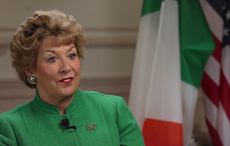At this very moment four decades ago, parents throughout the city of my birth were gripped by fear and desperation about what might lie ahead. Many of them were about to send children back to school, yet their annual late summer routines were rendered infinitely more complex in 1974. For United States District Court Judge Wendell Arthur Garrity had ruled that the Boston public schools were racially imbalanced.
While Garrity’s finding may have been correct, the remedy he deliberately chose to fix matters was anything but. In order to desegregate the schools, the judge ordered students to be bused across the city, i.e., white students from mainly white neighborhoods would have to attend schools in predominantly black neighborhoods and vice versa. With his order, the neighborhood school, in most of the city, was no more.
Put simply, many Boston public school students could no longer walk to the school they lived across the street or down the road from. Instead, they were forced to board at least one bus and embark upon a journey to a different, maybe far-flung neighborhood. This was despite the fact that their parents might have attended the same school themselves and/or bought or rented a home so that their children could have the same educational experience they did. And these children had to get on a bus and face a far longer and more turbulent schoolday through absolutely no fault whatsoever of theirs or their parents.
The foregoing facts are every bit as unassailable as Judge Garrity’s ruling that the Boston public school system was segregated in the early 1970s. I’ve outlined them in this neutral fashion to ensure that all readers – in Ireland, in the US and around the world – can recognize what an extraordinary injustice was perpetrated upon Boston’s school-aged children and their parents – both black and white – by an unelected, unaccountable federal judge who lived in an exclusive suburb and who had other, more practical remedies open to him short of forced busing.
As we Bostonians mark 40 years since one of our city’s darkest hours, I believe it’s extremely important, for the sake of history, that those who will read media accounts on the anniversary of the chaos that ensued in September 1974 fully understand what caused it. I am used to being greeted by Irish people who have a strong sense of Boston’s troubled racial past. However, they typically have no idea as to what planted the seeds of so much bigotry and hatred, perhaps especially among Irish Americans. There is no excuse or justification for the attitudes and sentiments anyone who grew up in the city or surrounding communities has long been accustomed to hearing. Nonetheless they are, in large part, connected to what transpired 40 years ago.
It is with sadness that I will see images in the Boston, national and international media in the coming days of white people of Irish ancestry in neighborhoods like South Boston, Charlestown and Dorchester carrying signs with despicable images or mouthing racial epithets in protest at forced busing. The camera footage will also show that the areas adjacent to Boston’s schools looked more like war zones with hundreds of protesters, police officers and other security personnel present nearly every day. Additionally, the shocking photograph of attorney and civic leader Ted Landsmark being stabbed with an American flagpole by a gang of white youths on City Hall Plaza will doubtless feature again.
Busing brought out in the open racist attitudes that probably lay just beneath the surface in Boston. And these images have been and always will be seized upon by outsiders who don’t know our city, its people or the horrendous state of play back then. They have drawn unfair, unduly harsh conclusions as a result. They have judged; they have ridiculed; and they have looked down their noses in the intervening years.
But most of them have never tried to imagine what it could have been like to be a parent or a student in Boston in 1974. If they did, it might lead them to confront some inconvenient truths about how they would have reacted in the same situation.
The truths are that the overwhelming majority of those parents who could afford either to send their children to private or parochial schools or to move out of the city altogether did. And most of those who had to put their kids on buses did so only because they lacked the financial means to do otherwise. Looking back even after all this time, it’s difficult to fathom the fear and desperation they felt. Sadly, though inevitably, the anguished emotions and conditions they endured often gave way to racism. It’s possible to understand this reality without condoning it. Moreover, to paraphrase one prominent busing-era figure: “How many black and white students were denied a good education? How many families were torn apart? How many lives were forever altered? How many turned to alcohol or drugs?” The answers to these questions are depressing and infuriating.
In Boston this September, politicians of then and today will surely echo the observations that those were terrible days and that Boston is a transformed city. They are right. The city is now minority-majority and far more fully integrated. The racial climate is better in 2014 than it ever has been. Boston truly is a forward thinking, progressive city where lots of people want to live. It is a great place. But that does not mean that what was done to Boston and Bostonians in 1974 through a federal judge’s order should ever be forgotten. It was unforgivable.
Here’s the documentary “Can We Talk? Learning from Boston's Busing/Desegregation Crisis”:




Comments